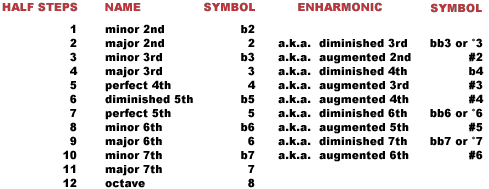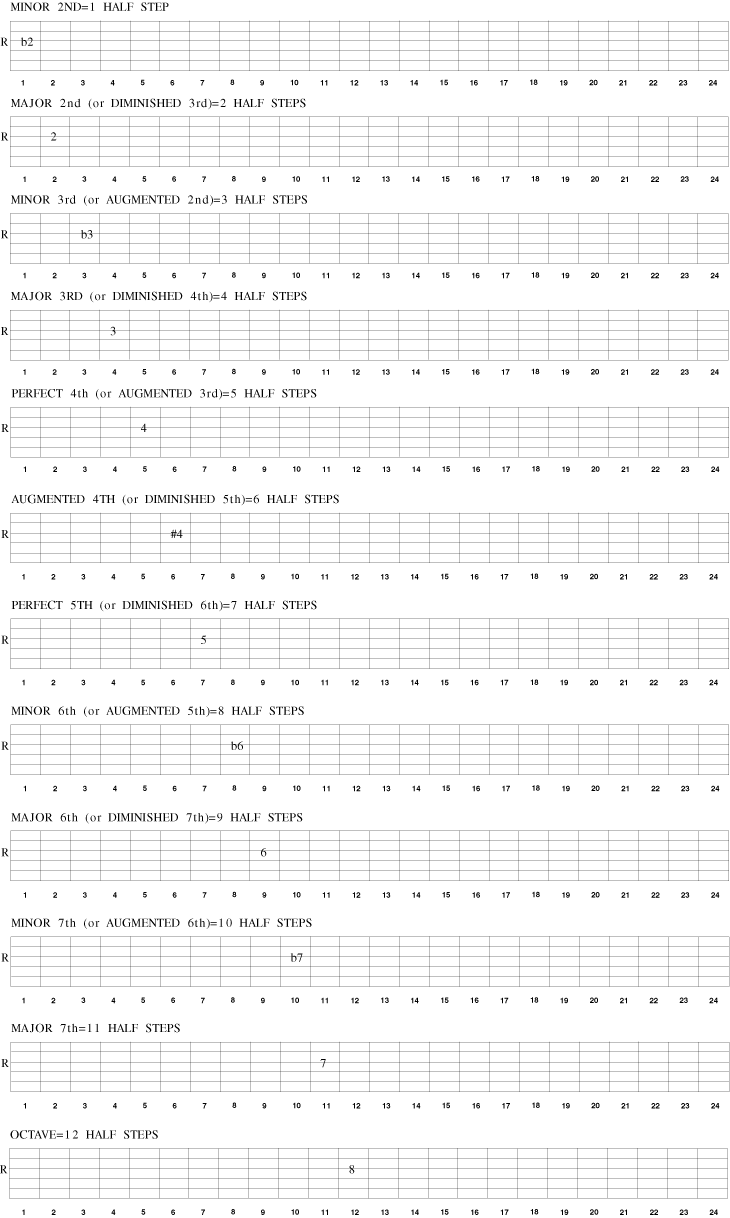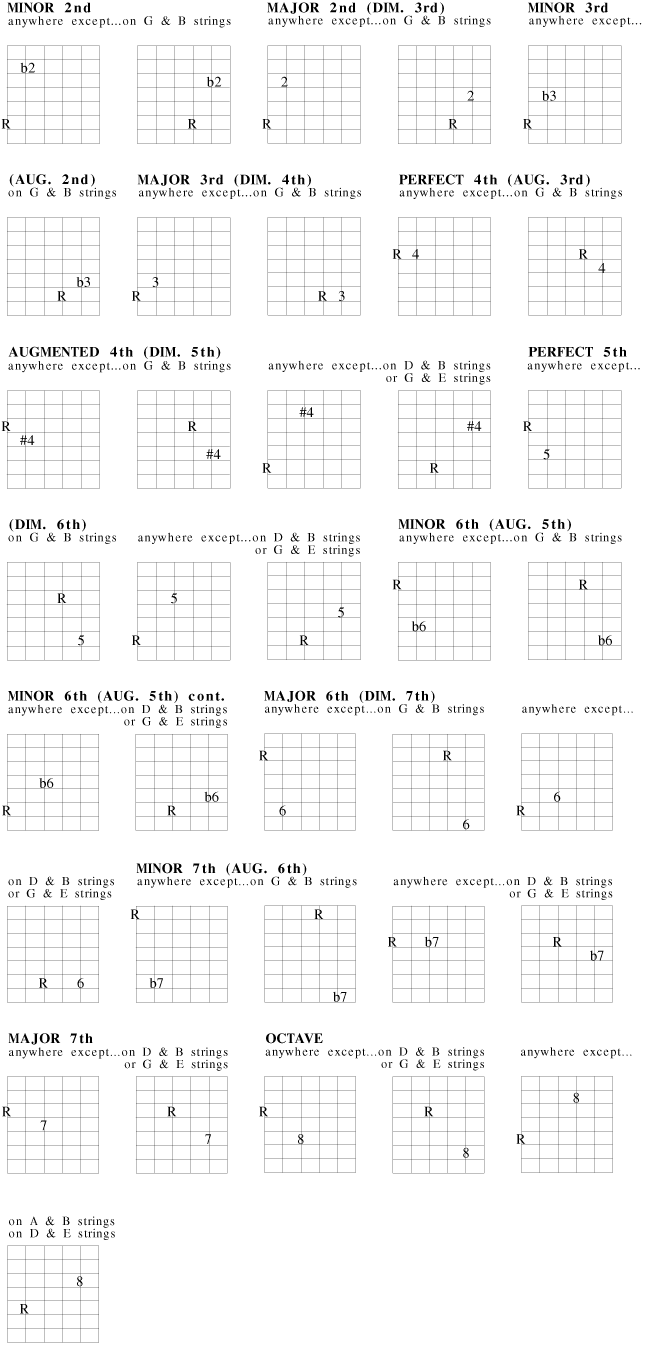UNDERSTANDING INTERVALS
In case anyone out there is a little dumbfounded by all these numbers on the fretboard charts at this site, I figured I'd provide a little background info on intervals. An interval is simply the distance between two notes. Knowing and understanding intervals is the key to learning chords, arpeggios, scales, you name it. Intervals are the shit, man. Learn them inside and out, and you will have the ability to understand the construction of anything in music. The following chart is for "simple" intervals, that means intervals of an octave and smaller. Many of you may have come across "compound" intervals, such as 9ths, 11ths, 13ths which are not listed in this chart. Compound intervals are simple intervals increased by an octave. For example, a 9th is the same interval as a 2nd increased by an octave. The rule is: subtract 7 from the compound interval to find its simple interval counterpart. 9 - 7 = 2, 11 - 7 = 4, 13 - 6 = 7, get it? Compound interval terminology is mainly necessary for understanding larger chord structures, due to stacking, or leap-frogging, thirds when constructing chords. More on that later and elsewhere. For now, this chart is all you need to know to understand anything currently at Chops from Hell.

Notice that some intervals have enharmonic equivalents. This means that there is more than one possible name for a given intervallic distance. This is necessary at times to properly describe the structure of a particular chord or scale.Now lets see how this relates to the fretboard. The easiest way to grasp this information is to see how the intervals relate to each other on a single string. You could start on any string on any fret. I've chosen the open G string for the examples on the following page. (R) designates the starting pitch or lower note of the interval.

Obviously, the previous interval shapes become impractical after the perfect 4th due to the large stretch, so it's necessary to learn them across the strings as well. As the interval shapes move across the strings, they need to be adjusted to compensate for the differences in tuning between the strings. For instance, if an interval shape is on two adjacent strings, when the shape is played on the G & B strings the note on the B string has to be played one fret higher to maintain the same distance between the two notes. If the interval shape skips strings between the two notes, then the upper note of the interval has to be played one fret higher when it is on the B string and also when it is on the high E string. This is due to the way the guitar is tuned. There is an interval of a perfect 4th between the low E & A, the A & D, the D & G, and the B & high E strings. However the G & B strings are tuned a major 3rd apart, this being the reason for having to alter the shapes to maintain the correct amount of half steps for any given interval.

Be sure to spend enough time memorizing these interval shapes to become thoroughly familiar with them. Doing so now will make it much easier for you to learn any chord, arpeggio, or scale in the future and it can tremendously improve your improvisational skills as well.